Was It Only a Fairy Tale? Musical Theater Storytelling Immerses Students in Italian Language, Culture and Folk Literature
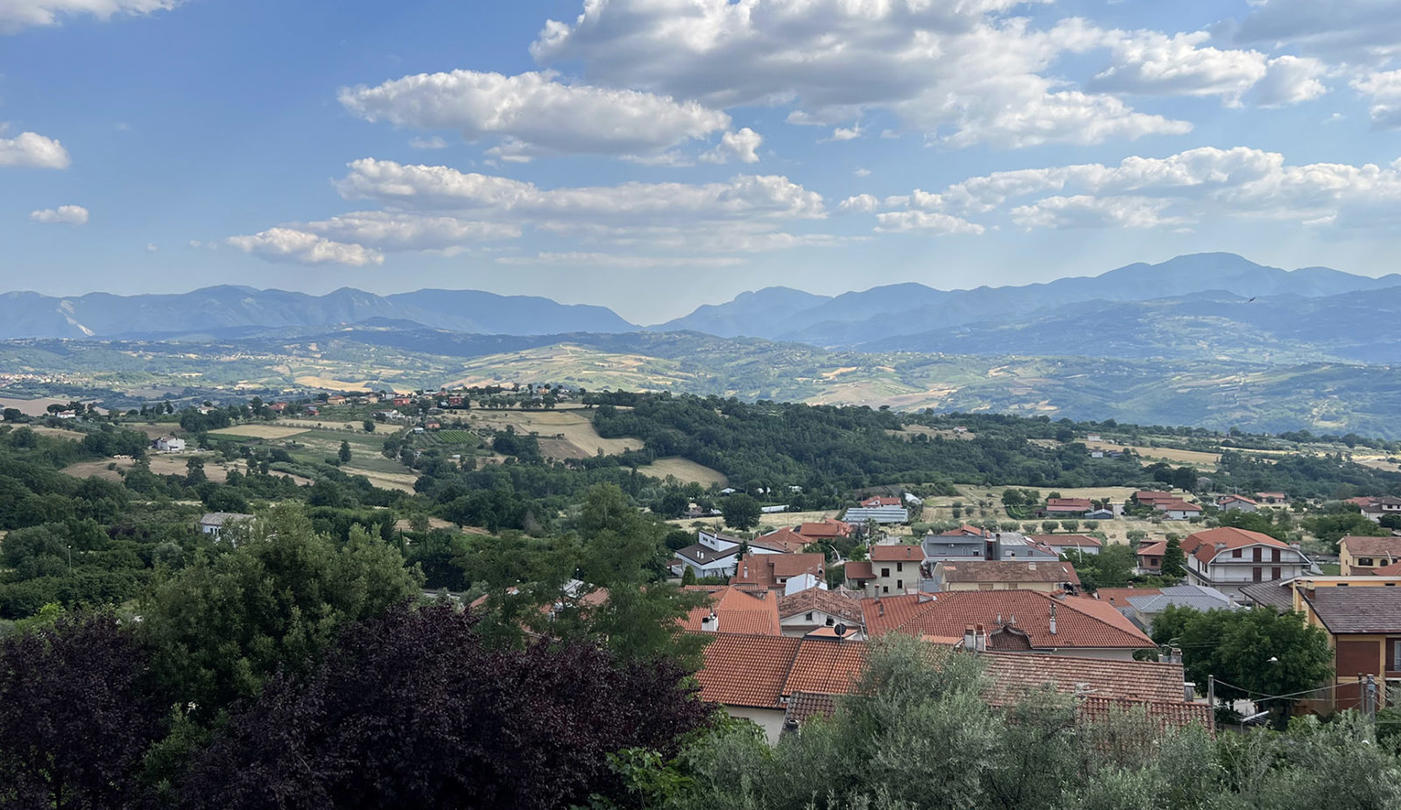
As the dark and cold days of January settle in, 13 Princeton students can warm at the recollection of six engaging weeks they spent this past summer immersed in musical theater in the picturesque Italian town of Gesualdo.
The Princeton Institute for International and Regional Studies (PIIRS), in collaboration with the Lewis Center for the Arts, offered the 2022 Global Seminar, “Musical Theater Storytelling in Italy: An Exploration of Giambattista Basile’s The Tale of Tales.” The for-credit course ran from June 20 to July 29 and brought students to Gesualdo, a small village 90 miles northeast of Naples, for an intensive immersion in Italian language and culture, folk literature and musical theater.
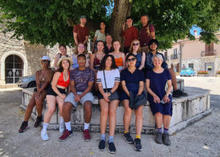
The seminar was led by Princeton alumni and founders of New York City-based Prospect Theater Company Peter Mills ’95, and Cara Reichel ’96, and Stacy Wolf, Professor of Theater in the Lewis Center and American Studies and Director of the Program in Musical Theater.
The Tale of Tales, also known as the Pentamarone, comprises 50 stories and is recognized as the first collection of literary fairy tales to appear in Western Europe. The work was written by Giambattista Basile in the Neapolitan dialect and published posthumously c. 1634–36 by his sister Adriana Basile, a well-known early opera singer. Bridging the gap between oral folk tradition and literature, The Tale of Tales became a reference point for fairy tale authors Perrault and the Brothers Grimm, as well as a valued resource for folklorists. After Giambattista’s death from the plague, Adriana published her brother’s work so that these stories — which up until that time were passed down orally — could be shared more widely and with future generations.
Through the course, Mills and Reichel collaborated with students and professional artists to develop and premiere an original musical inspired by the Basile siblings. “We were so intrigued by Giambattista and Adriana and wanted to bring this story to a wider audience,” Mills shared. “The opportunity to research the piece in the very place where the tales were handed down was essential. Workshopping the songs with musicians steeped in the traditions of the Neapolitan region was an incredible opportunity.” Mills’ score drew inspiration both from folk music of the region and the early operas Adriana performed, including works by Monteverdi. In the early 17th century, the Kingdom of Naples was under the Spanish crown, and the score reflects this cultural influence as well.
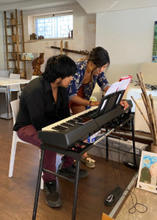
The seminar was divided into two phases.
The first half of the course focused on studying basic Italian and gaining knowledge about the local culture, reading the source material along with critical essays and learning basic practices of musical theater writing and the performance process. The musical theater works the students examined with Wolf also connected to Mills’ and Reichel’s new piece and the focus on fairy tales, such as Rodgers’ and Hammerstein’s Cinderella and Disney’s Beauty and the Beast, biographical musicals such as Hamilton and Evita and musicals about artists.
The second half of the course prioritized rehearsing for the culminating public performance, which included both site-specific performance installations inside the Palazzo Pisapia and an outdoor showing of Mills’ and Reichel’s original musical The Tale of the Tale of Tales. Professional guest artists from Prospect Theater Company joined the students, working in collaboration with members of the regional Irpinia cultural community. Throughout the course, students also developed and wrote their own individual, creative projects.
“It was incredible to see how the power of music and our shared passion for storytelling conquered any cultural or language barrier that existed,” said Charlotte Kunesh, a junior majoring in ecology and evolutionary biology and pursuing certificates in theater, music theater and global health. “It was one of the most special things I have ever been a part of.”
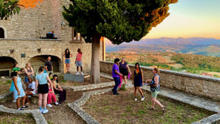
Only about half the Princeton students in the seminar came from a theater background, with at least one student who had never before performed in a show. A number of students, having just finished their first year, were new to both the college experience and to Princeton.
The students and faculty interacted extensively with the local community in Gesualdo and the surrounding region. Seminar participants lived for the six weeks in a local bed and breakfast with classes held in a 40-room palazzo in the center of town, venturing out daily in the local community and eating most of their meals in local restaurants. Excursions included the nearby cities of Pompeii, Paestum, Naples, and numerous small hill towns in the Gesualdo area, each with their own specific dialect and cultural identity. Students worked with local Italian musicians and music students, two local theater companies, local visual artists, and residents of all ages in the town, particularly for the final performance event.
“As a half-Italian, musical theater lover, I felt the seminar encouraged me to flourish as an artist and an Italian,” said sophomore Layla Williams, who is planning to major in English and hopes to pursue certificates in African American studies, creative writing, and visual arts. “I loved being able to dedicate my time to performing in The Tale of the Tale of Tales, creating a shadow play retelling of one of the tales with a friend in a cave-like room, and writing my own play inspired by personal experience with my Italian side of the family.”
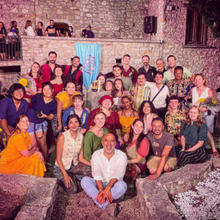
While opera, music and theater have long traditions of expression in Italian culture, musical theater—an American invention—is a newer art form, with many of the actors, musicians and audiences in the local community never having seen a musical. This was an important aspect of what the students, faculty and seminar brought to the Gesualdo community.
Presentation of the work created by the students and faculty and their local collaborators included performances of short vignettes and installations inside the palazzo where students, inspired by stories and the space, teamed up with one another and local artists. One installation included a paper beanstalk for audiences to follow through the building, while another featured Williams’ shadow puppet play in the cave beneath the palazzo. Other students wrote and performed an original song. The final performance was presented in a mix of Italian and English, with some students boldly performing in Italian.
“The first night of the culminating performance we put out 65 chairs and more than 100 members of the Gesualdo community attended,” said Reichel. “By the third night, word had spread, and we had about 300 in the audience. The next day local community members stopped students in the streets to talk about the show.”
In addition to studying language and history through the lens of a regional collection of tales, students developed a working knowledge of the richly collaborative process through which musical theater is created, as well as a firsthand understanding of the role that directors, performers, and others play in interpreting work and giving feedback to the creative development process. By working closely with professionals, the students gained experience and insights into the craft of musical theater writing, learning basic principles of the form, as well as how to shape songs and musicalized scenes for maximum storytelling clarity and effectiveness.

“As an aspiring artist, the program allowed me to approach musical theater as a scholar, as a creator and as a performer, all with the backdrop of the beautiful and culturally rich country of Italy,” said Matthew Weatherhead, a pre-med senior from Barbados majoring in psychology and pursuing certificates in neuroscience and music theater. “For my final performance, I was not only able to showcase a piece that I wrote with my classmate based on an Italian folktale, but I was also able to perform with industry professionals, and in the process learn about their lives and craft.”
Several Global Seminars are offered each summer with the goal of teaching across disciplines and making concrete connections between pedagogy and place, and “Musical Theater Storytelling in Italy: An Exploration of Giambattista Basile’s The Tale of Tales” is a good example of the type of immersive experience students have through the seminars. No other studies, jobs or other activities distract from the intensive focus on the subject matter and location. Wolf explains that the combination of academic study and hands-on learning – scholarship and practice – are hallmarks of many Lewis Center courses, so the format of the Global Seminar is an excellent fit for a course like this one. This intensity benefits the faculty as well by providing a rare opportunity to focus their scholarly research or creative endeavors on a specific topic or project. Mills and Reichel particularly noted the extent of creative output they achieved over the six weeks in Gesualdo.
“Participating in the Global Seminar in Italy was truly a once-in-a-lifetime experience,” adds Weatherhead. “I would be remiss not to mention how much guidance and support we received from our incredible instructors, all skilled in their respective sub-fields within musical theater and Italian language and culture. All in all, it was an amazing experience that helped me to learn more about myself, and one that I would recommend any aspiring artist to have.”
This Global Seminar was generously supported by the Beth M. Siskind Global Seminars Fund. PIIRS Global Seminars are made possible in part by the contributions of alumni and friends and ongoing efforts of the Office of Development. This seminar also received support through a Princeton Humanities Council David A. Gardner ’69 Magic Grant.
